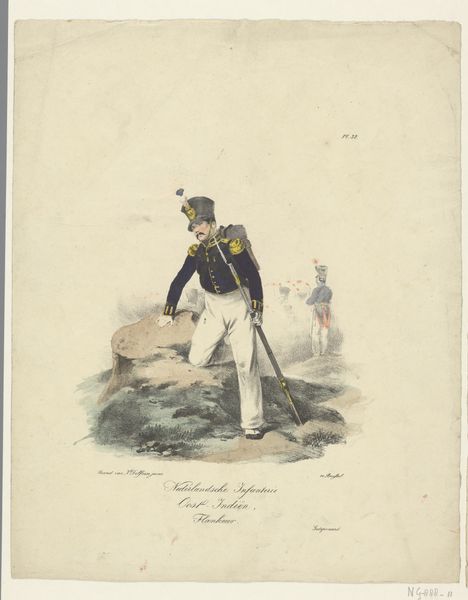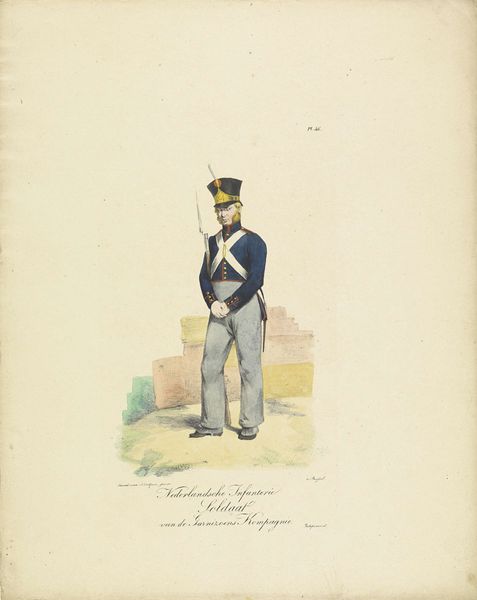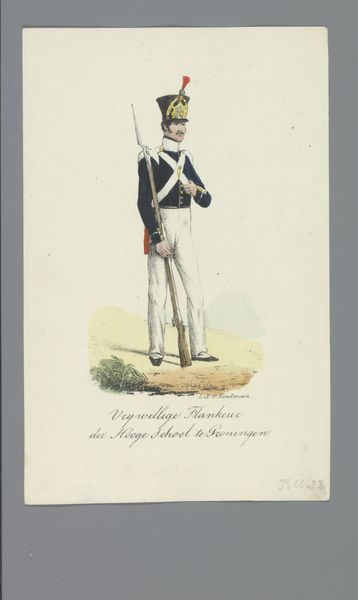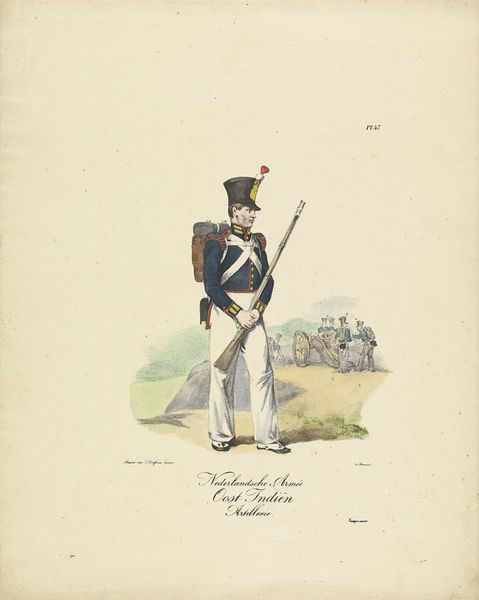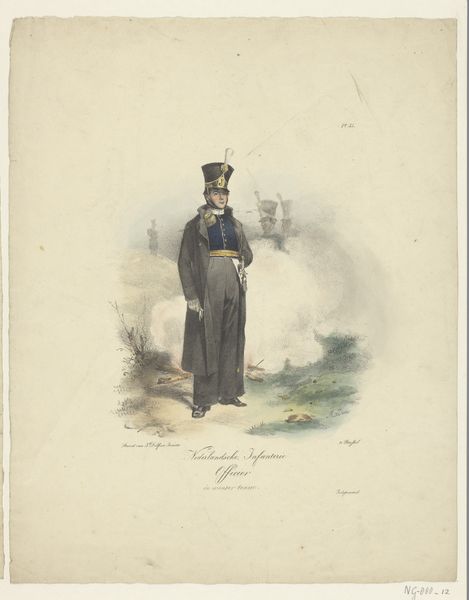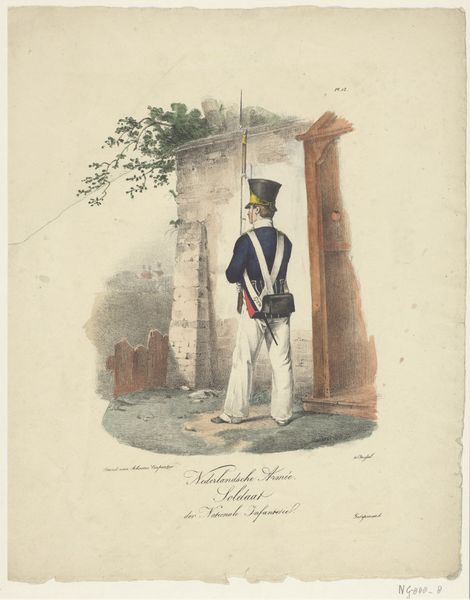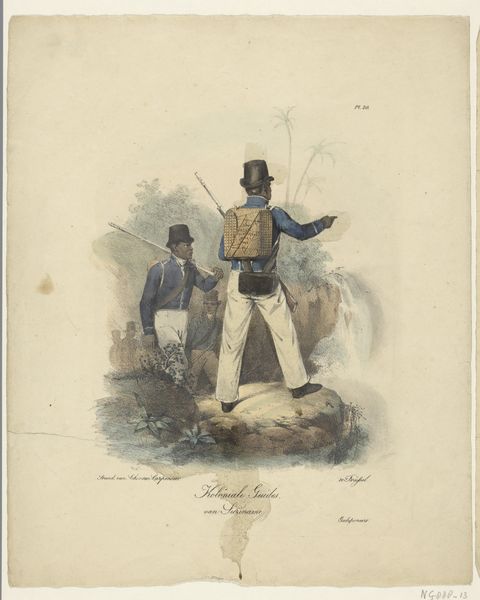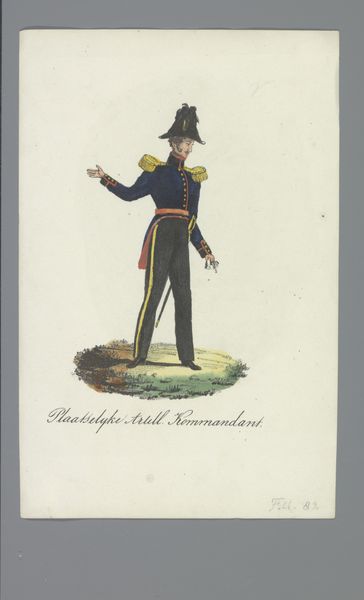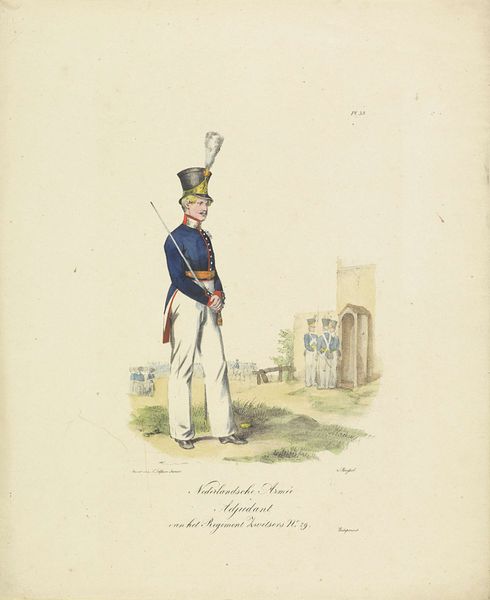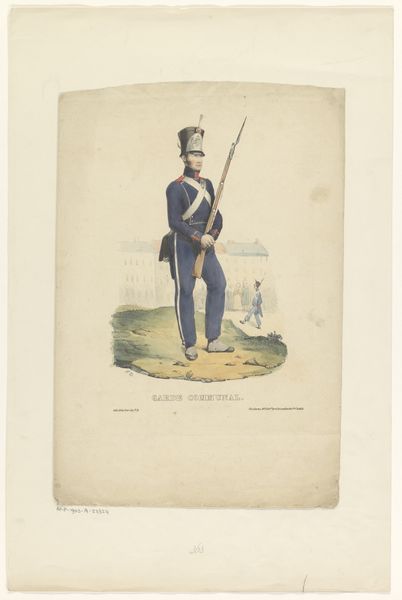
Nederlandsche Armée / Oost-Indiën, Luitenant der Infanterie 1823 - 1827
0:00
0:00
jeanbaptistemadou
Rijksmuseum
watercolor
#
portrait
#
watercolor
#
romanticism
#
watercolour illustration
#
history-painting
#
watercolor
Dimensions: height 370 mm, width 295 mm
Copyright: Rijks Museum: Open Domain
Curator: Here we have Jean-Baptiste Madou’s "Nederlandsche Armée / Oost-Indiën, Luitenant der Infanterie," a watercolor from around 1823-1827. Editor: My first thought? It's like looking at a carefully staged dream. The soldier with his sword is vivid, but everything behind him seems to dissolve into smoke and memory. Curator: The artwork reflects the Dutch colonial presence in the East Indies, focusing on a lieutenant of infantry. Madou likely intended to visually document the military uniforms and the individuals who represented Dutch power abroad. Editor: Power, yes, but there's a melancholy to it. He looks almost lonely, despite the faint echoes of his troops behind him. Is it romanticism or just good marketing? Curator: It's certainly enmeshed within the visual language of Romanticism, evoking both adventure and an awareness of the costs associated with empire. The lieutenant is idealized, a figurehead representing both the supposed glory and the burden of colonial rule. We need to consider how this portrayal served to legitimize colonial ambitions back in the Netherlands. Editor: Legitimize or perhaps mask the more brutal aspects? I imagine life as a colonial soldier wasn’t all heroic stances and clean white trousers. This image sanitizes it, giving us a porcelain soldier amidst the harsh reality. Curator: Precisely. The watercolor technique adds a layer of finesse that veils the violence inherent in colonialism. We see the sharp lines of his uniform, but not the messy realities of war and occupation. The light, airy touch serves as a form of erasure. Editor: So, it's a pretty picture doing a not-so-pretty job. And in terms of how this object exists today? A lingering question about identity, pride, and what was really happening then and in its lasting presence. Curator: Indeed. And by viewing it critically, understanding its place in a specific historical context, we can better engage with its complexities and, perhaps, disrupt its intended message. Editor: Agreed. There's so much more than meets the eye if you dig beneath the pretty facade, and there is always more to the story if one cares to see what may or may not be intentionally present in these kinds of works.
Comments
No comments
Be the first to comment and join the conversation on the ultimate creative platform.
